Research column
Search: 2013 2014 2015 2016 2017 2018 2019 2020 2021 2022 2023 2024
| 2022 | |
|---|---|
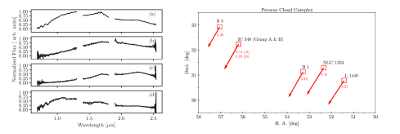 | 博士生 Bhavana Lalchand 與陳文屏教授在恆星形成區指認稀有的年輕棕矮星。一般相信這種天體跟恆星與行星一樣,都在分子暗雲中誕生,但因為棕矮星質量比恆星小,不足以維持內部核反應,因此形成後光度與表面溫度很快降低,不容易偵測,傳統使用多波段紅外顏色來辨認,容易受遙遠背景光源受到紅化而誤判。我們團隊歷來在紅外線的水分子吸收波段,以特殊的濾光片觀測,挑選大氣中有水分子的候選棕矮星,然後利用紅外光譜驗證,證明非常有效率。這次發表的成果,在距離約1000光年的英仙座分子雲中,先以廣視野紅外影像,然後利用光譜驗證,成功找到棕矮星。圖左是利用 IRTF 的光譜儀取得的紅外光譜。圖右是以 Gaia 太空望遠鏡的數據,估計該區域不同分子雲(黑色字母)的距離(紅色數字表示週年視差角 milli-arcsecond)與運動狀況(箭頭表示自行運動 mas/year),以探討該區域不同分子雲的恆星形成活動。
|
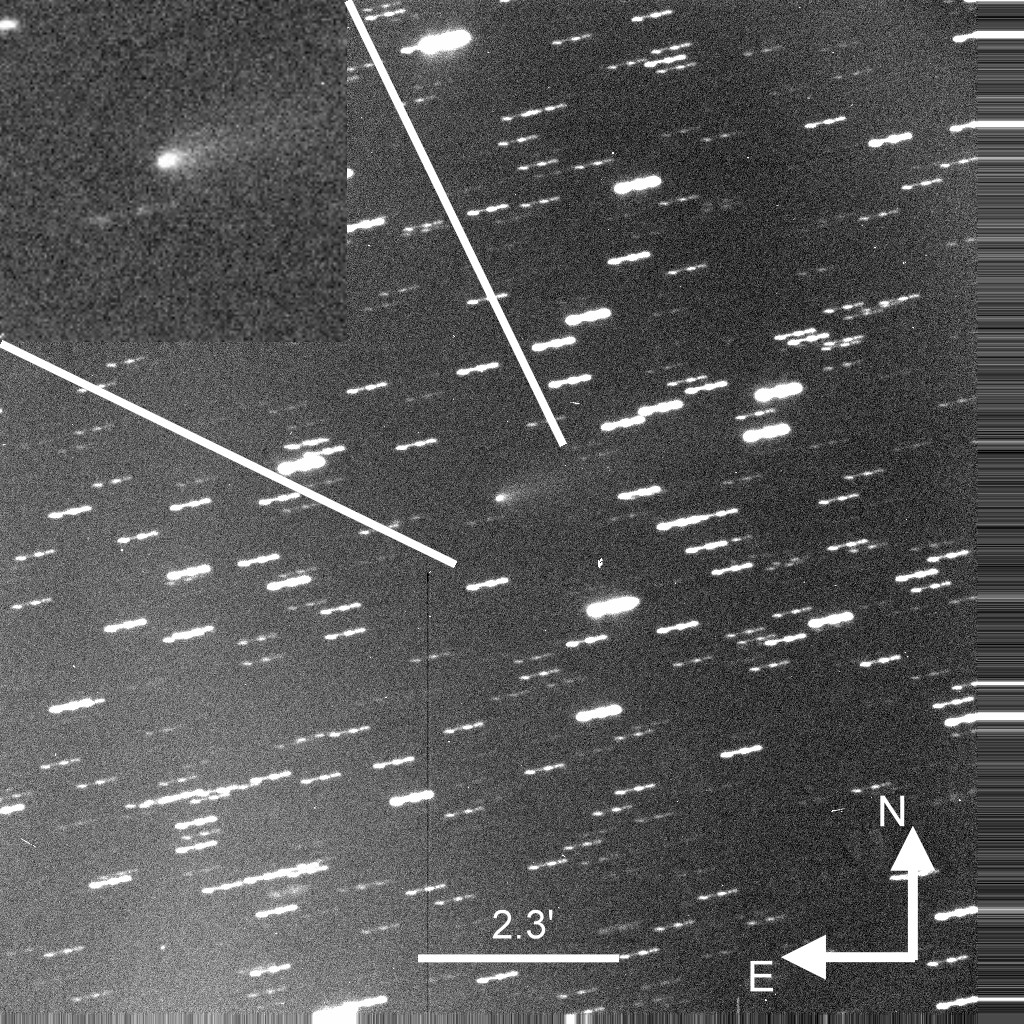 | B. T. Bolin, GSFC, on behalf of the "Zwicky Transient Facility (ZTF) Collaboration", reports on observations of possible comet candidate ZTFt001 taken with the 1.2-m Schmidt telescope at Palomar Observatory. The object was flagged as having a possible cometary appearance in data taken on 2022 August 15 at 11:59:00 UTC and on 2022 August 16 at 12:04:10.071 by the Tails artificial intelligence pipeline (Duev et al. 2021, DOI: 10.3847/1538-3881/abea7b). The object’s appearance contained a coma ~4 arcsec wide and a broad tail ~20 arcsec long in ZTF images taken on 2022 August 15.499 and August 16.503 UTC. The comet was identified in ZTF images on subsequent nights by Tails and M. S. P. Kelley (U. Maryland). ZTF r-band photometry (5" radius aperture), measured by Quanzhi Ye (U. Maryland), was as follows: 2022 Aug 15.499, ~18.5; 2022 Aug 16.503, 17.8. The position angle of the comet’s tail was ~272 degrees.
|
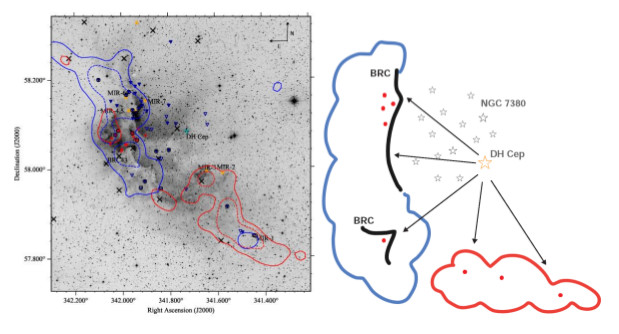 | 博士生 Tanvi Sharma 與陳文屏教授研究大質量恆星誘發星團與恆星形成的過程。我們針對 Sh2-142 這個大質量恆星周圍的氫游離區,探討 DH Cep 這顆大質量恆星其恆星風以及輻射如何影響分子雲(上左圖紅色與藍色曲線為一氧化碳紅移與藍移的輻射強度的分布)、游離雲(上左圖底的可見光照片,黑灰色代表恆星或發射雲氣)、星團(NGC 7380),以及個別年輕恆星(我們利用紅外數據指認)。上圖右為交互作用的示意圖。
|
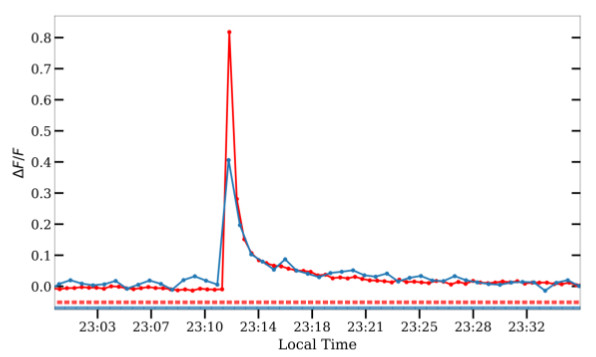 | 碩士生林瀚堂與陳文屏教授研究紅矮星的爆發。這顆 Wolf 359 已知常有亮度爆發,一般認為來自表面磁場重組,有如在太陽表面觀察到的閃焰現象,但紅矮星因為內部對流旺盛,表面磁場更強,更好發閃焰,釋放能量規模也大得多。我們利用兩座望遠鏡同步監測目標,以估計閃焰的次數以及能量分布,尤其針對其中某巨大閃焰事件,利用兩個取樣不同的光變曲線(如上圖所示),我們推測出閃焰實際的強度,以及能量釋放的時間尺度,而這是單一望遠鏡所無法估計。以此閃焰來說,一共釋放 10^33 爾格,實際上爆發峰值達到恆星靜態亮度的1.6倍,而單一望遠鏡各觀測到的峰值都低估為0.4與0.8倍。
|
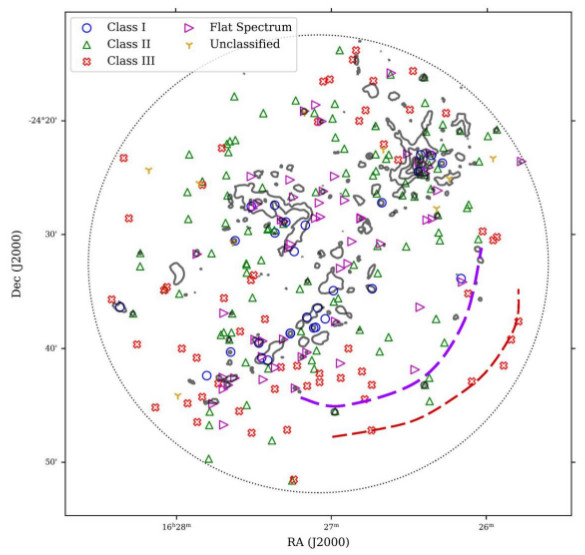 | 碩士生 Aashish Gupta 與陳文屏教授探討鄰近的 Rho Ophiuchi(蛇夫座)區域中的恆星形成過程。由於恆星來自星際雲氣重力塌縮,剛誕生的恆星周圍仍有大量雲氣,而隨著星球演化,不但周圍雲氣消散,原來環繞在恆星四周的盤狀雲氣也消失(或是誕生了行星)。我們利用位於夏威夷 的次毫米波望遠鏡JCMT取得低溫雲氣的分布(上圖灰色曲線標示範圍),並使用紅外波段數據指認不同演化階段的年輕恆星,以及蓋婭 (Gaia) 數據有關星球的距離與運動狀態,探討初生星球跟雲氣的關係。上圖中雲氣集中之處聚集了年輕恆星,而右方的紫色曲線代表雲核,以及剛從其中誕生、周圍仍有充分物質的(第二類)年輕天體,而最右方的紅色曲線則標示周圍物質已經消散的(第三類)年輕星球。已知在此圖以外右下方有個OB星協,我們的研究提供了大質量恆星誘發下一代恆星誕生(從紅色曲線,到紫色曲線,再到雲氣)的時間序列。
|
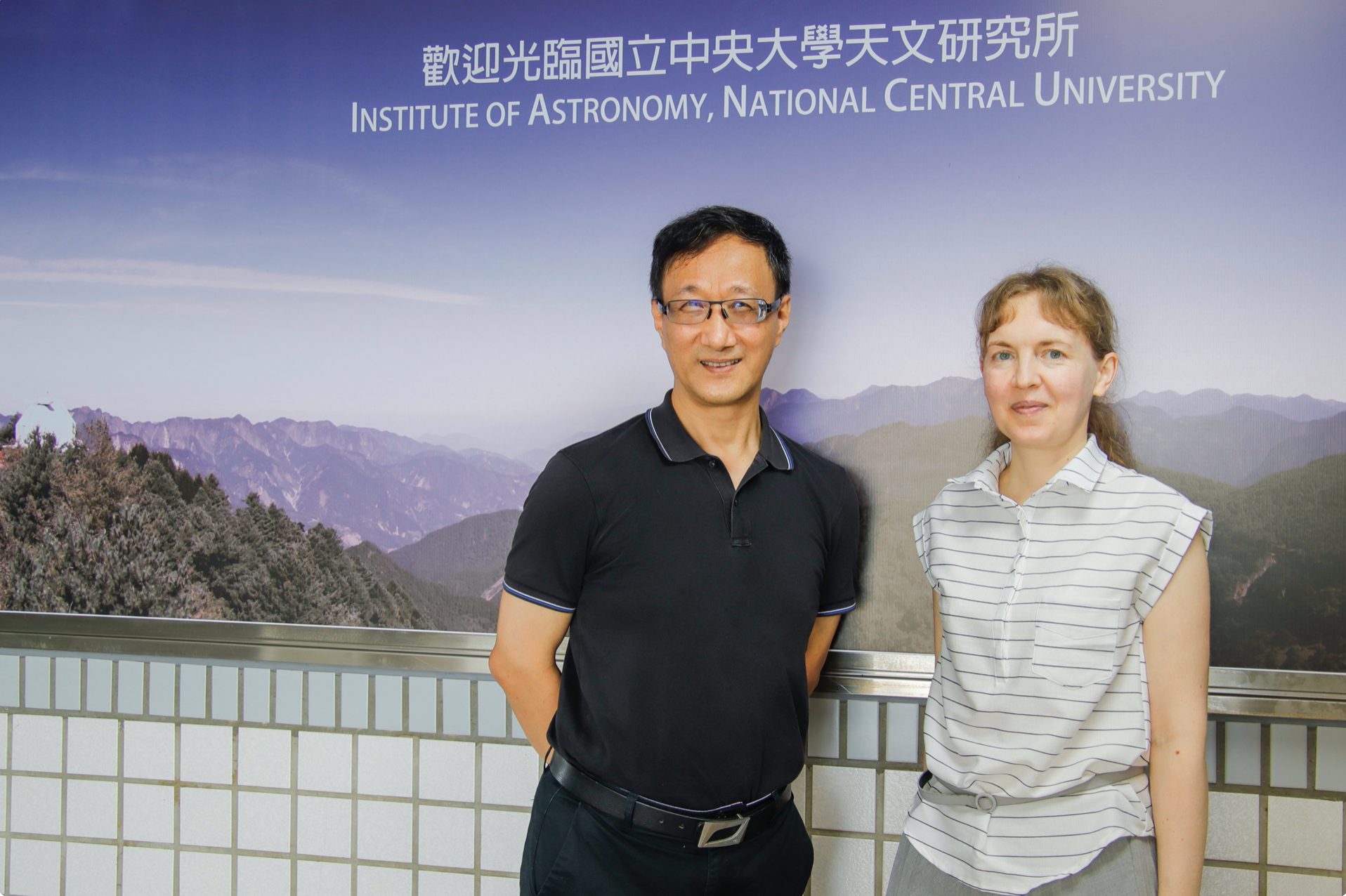 | 黃崇源教授和柯伊娜研究學者自2010年的泛星計畫(Pan-STARRS Project)與許多不同的天文學觀測資料中,選擇高紅移類星體作為目標。2020年透過光譜觀測與分析,希望能釐清該星體的紅移。在耗時兩年多的研究後,原本以為觀測對象只是電波類星體,然而透過電波及光譜分析和英國紅外線望遠鏡(UKIRT)觀測出其快速變化的特徵後,卻發現對象為紅移6.5的蝎虎座BL天體。然而,學界從未發現過如此遙遠的蝎虎座BL天體。
|
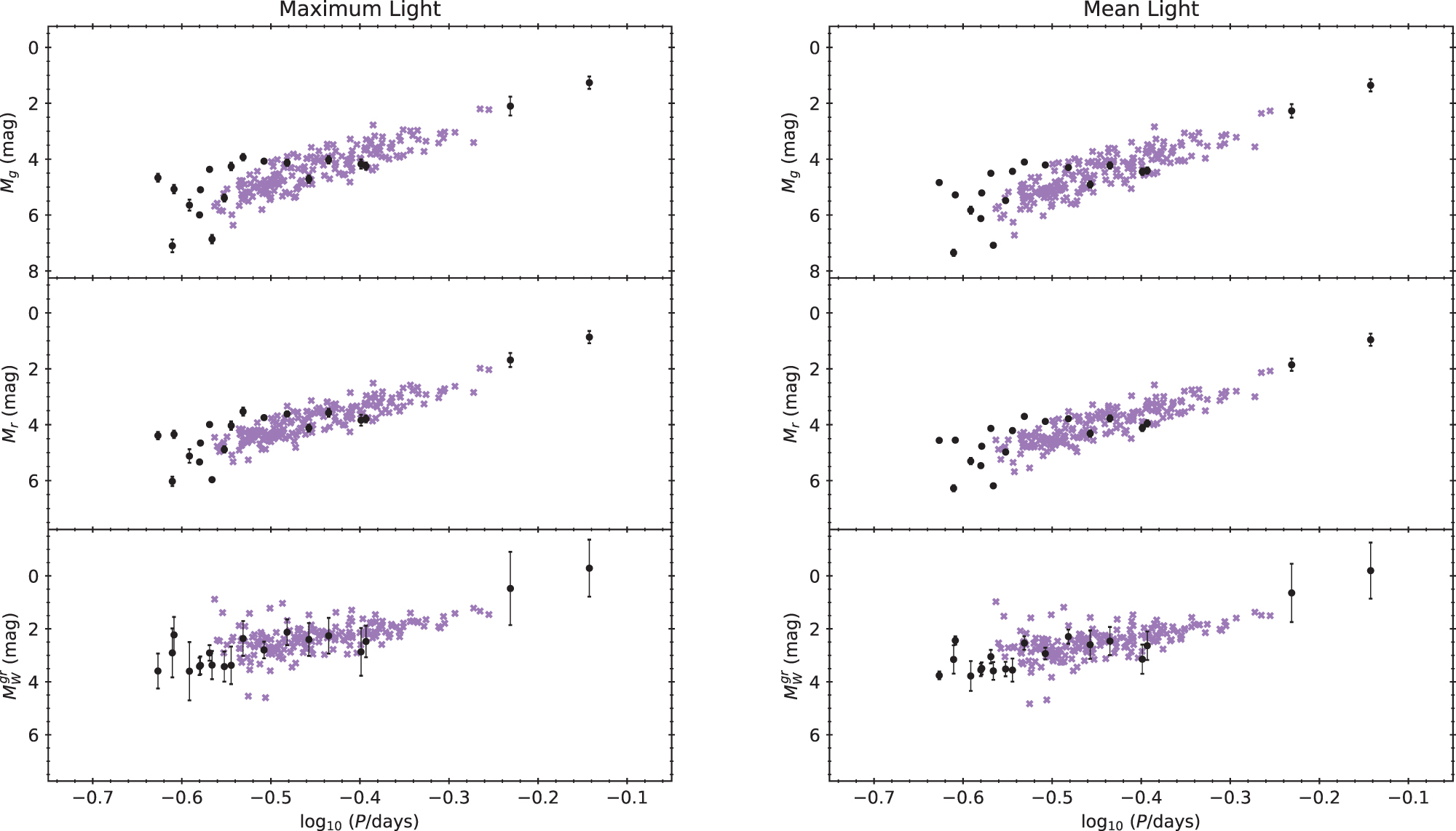 | Prof. Chow-Choong Ngeow: Using ZTF data, we derived the contact binaries period-luminosity relations in the gr-band for the first time. These contact binaries were located in the globular clusters (black filled circles), showing a remarkable good agreement with the contact binaries located in the Solar neighborhood (purple crosses, after transformed the BV-band to gr-band) in the period-luminosity relation. This work is published in Ngeow et al 2021, AJ, 162, 63
|
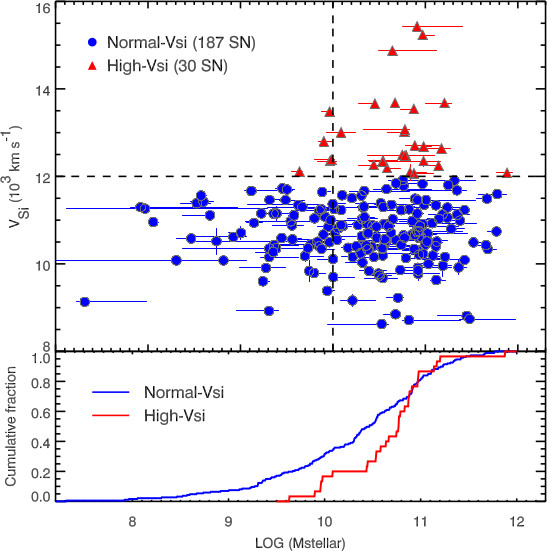 | Prof. Yen-Chen Pan: Ejecta velocity of SNe Ia is one powerful tool to differentiate between progenitor scenarios and explosion mechanisms. In this paper we investigate the relation between ejecta velocity (using photospheric Si II 6355 line) and host-galaxy properties with ∼280 SNe Ia. We find a significant trend that SNe Ia with faster ejecta velocities tend to explode in massive environments, whereas their slower counterparts can be found in both lower-mass and massive environments. We suggest this relation is likely caused by at least two populations of SNe Ia. We conclude metallicity is likely the dominant factor in forming high-velocity SNe Ia. This also implies their potential evolution with redshift and impact on the precision of SN Ia cosmology. This result has been published in Pan (2020), ApJL, 897, L5.
|
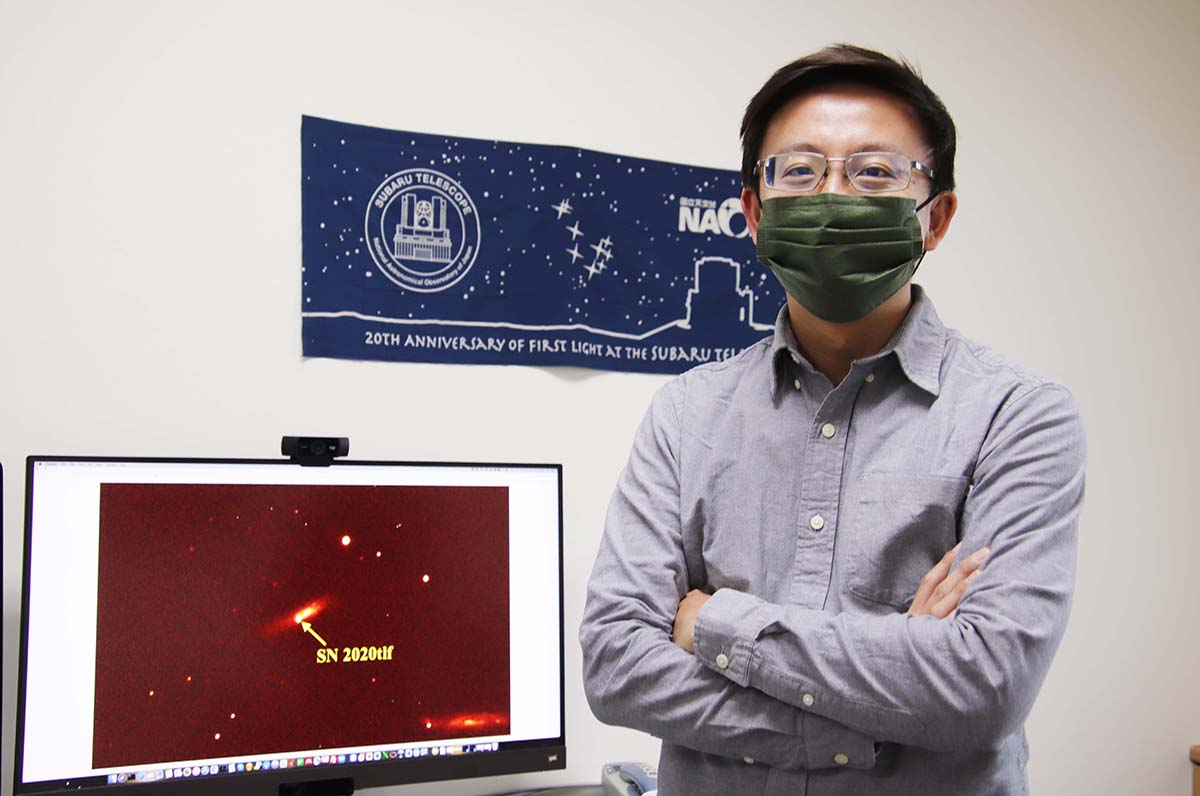 | Young Supernova Experiment, YSE, presents panchromatic observations of supernova SN 2020tlf at ~130 days from mass-loss episodes to the explosion, which involved Prof. Yen-Chen Pan at the graduate institute of astronomy in NCU. This project was led by Ph.D. student Wynn Jacobson-Galán at UC Berkeley to detect a supernova explosion in 2022, by using the Pan-STARRS telescope. SN 2020tlf is far from earth about one hundred million light-years. YSE detected “flash” spectroscopy about one days before its explosion, which is the first time revealed the light curve fluctuated before the explosion of a supernova. Astronomers considered it was due to the mass-loss episodes. So, the tiny changes can only be detected by a sensitive telescope. This may be the reason why it has never been revealed before. This observation can also help us understand the dying process of the massive star.
Observations of SN 2020tlf were also obtained with the 1 m Lulin telescope located at Lulin Observatory, which contributed to BVgr bands before the explosion. Lulin observatory played a key role with its excellent location. It can contribute to those events in the future. This important result has been also reported by CNN. This result is published in Jacobson-Galán et al. 2022, ApJ, 924, 15 (Including Prof. Yen-Chen Pan).
|
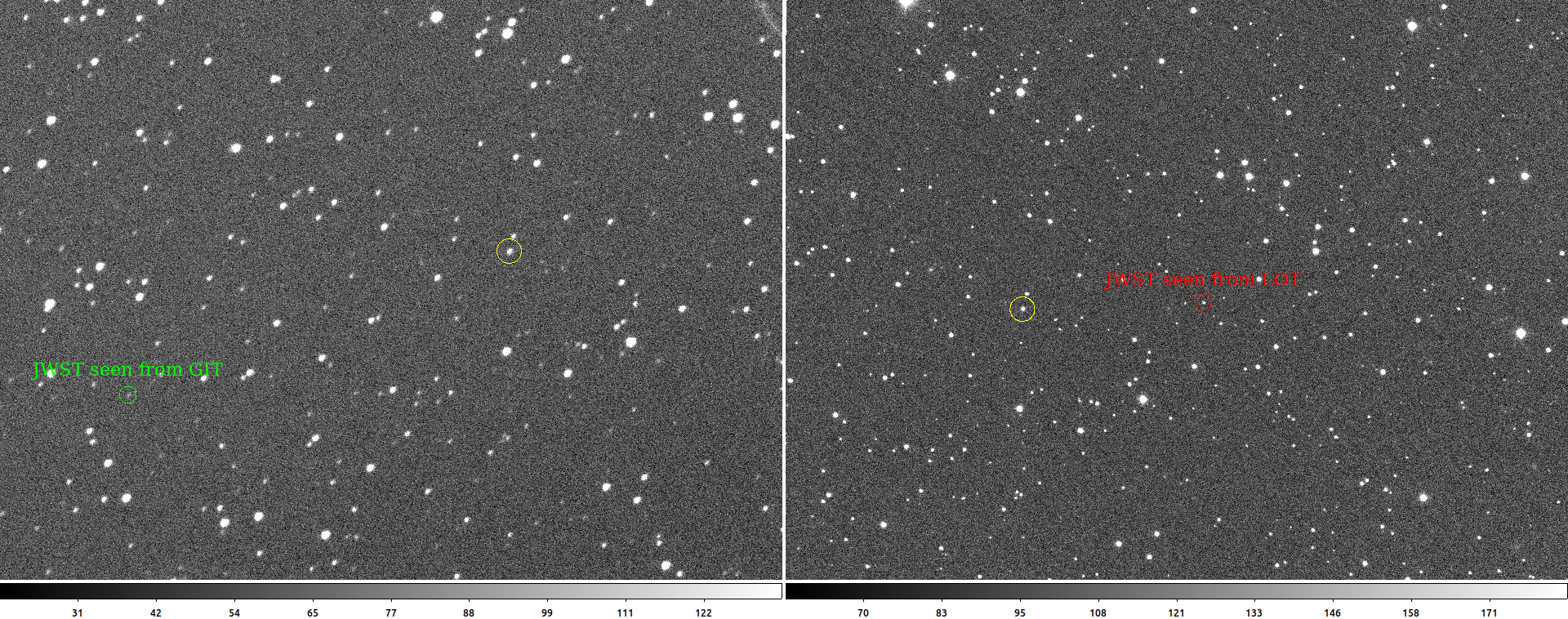 | [Image caption] The left and right images are GIT and LOT images that captured the JWST, marked with the green and red circles, respectively. The yellow circles are a reference star to compare the relative locations of JWST on these images.
|
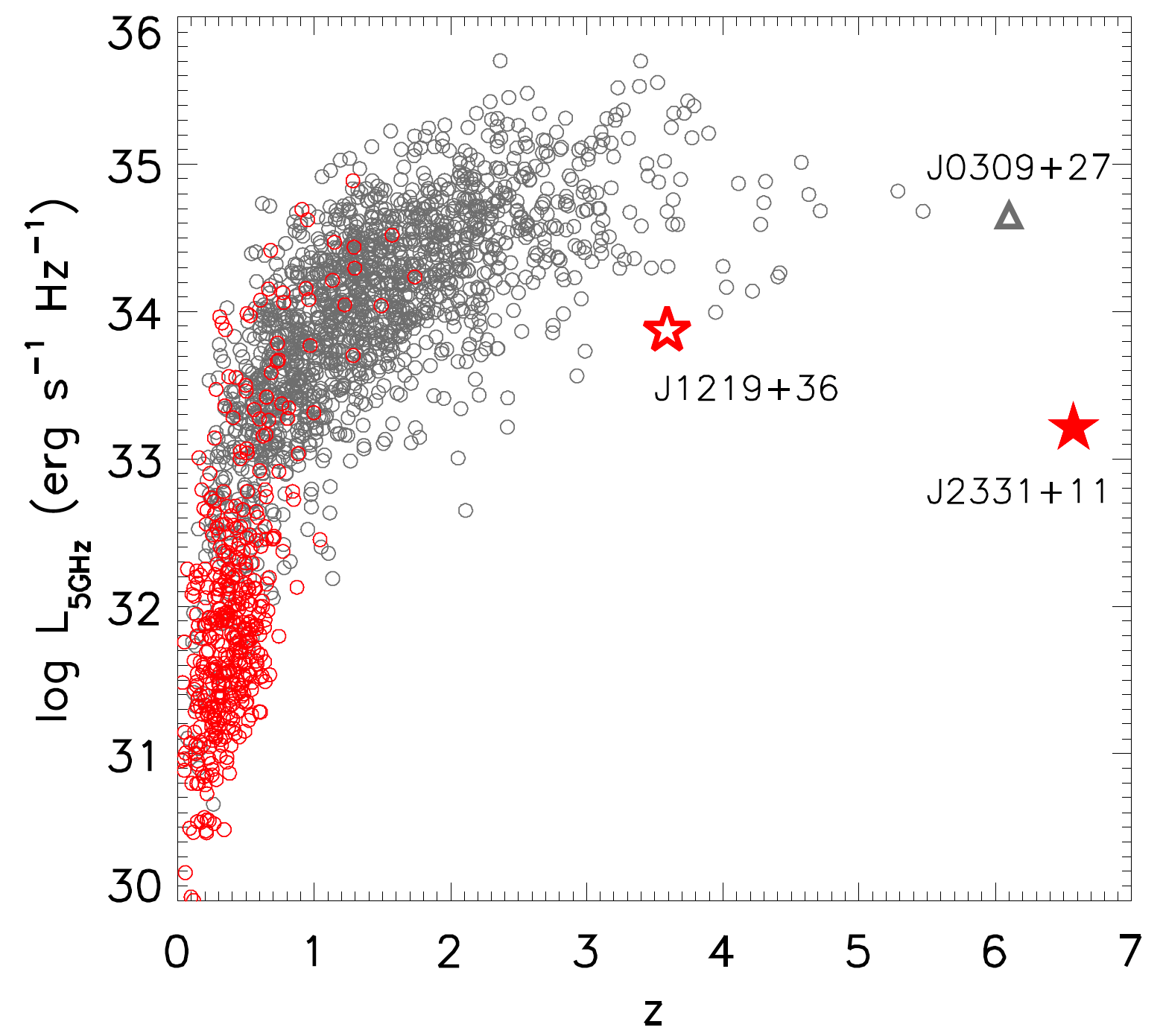 | 圖:已知耀變體的電波光度對紅移的分佈圖。黑色和紅色空心圓是已知的平譜類星體FSRQ和蝎虎座天體BL Lacs。空的紅星是之前已知最遠的蝎虎座天體,黑色三角型是目前已知最遠的平譜類星體。實心的紅星是本次研究所發現的最遙遠的蝎虎座天體。圖/天文所提供。
|
